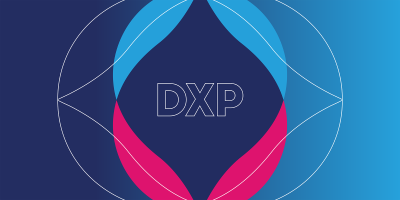
Using Image Recognition Software to Streamline Your DAM Workflows

Not too long ago, artificial intelligence (AI) was just a concept from science fiction movies. But today, AI is changing the status quo of entire industries — including marketing technology (martech). When it comes to digital asset management (DAM), image recognition software has a valuable and growing role in metadata creation by automatically tagging assets during the upload process.
Let’s take a look at how image recognition software works and the efficiencies it can bring to DAM workflows.
Image recognition functionality
DAM systems help teams organize, find, distribute, and analyze their digital content. All of these functions are powered by metadata, or information that describes what a file is and how it should be used.
Each piece of metadata is captured in a separate field, and a system of fields is called a metadata schema. So for example, if a marketing team is using a DAM system to manage their stock photography, their metadata schema might include fields like subject, campaign, and keywords to describe what the file is and make it findable.
For metadata to be effective, it must be applied consistently and accurately to every asset in a DAM system...which, not surprisingly, can be a pretty time-consuming process. With image recognition software, however, AI can do a lot of the metadata tagging for you!
When it comes to digital imagery like photographs and graphics, this software can:
- Identify objects and attributes in images
- Detect emotions such as “happy” or “surprised” from subjects’ faces
- Automatically categorize images into groups like “indoors” or “outdoors”
- Automatically apply tags and keywords to images
This ability to automatically categorize and tag images extends to a range of scenarios. It can detect colors, celebrity faces, or demographics — including the age, ethnicity, or gender of persons in the image. It can also apply keywords for specific industries, such as travel, food, and apparel.
Further, image recognition software includes security features that allow DAM administrators to:
- Moderate assets and automatically delete or hide uploads with inappropriate content
- Enable auto-tagging functionality for specific upload profiles or metadata fields
- Influence how the controls for strength, relevance, and variety are configured
Together, these flexible capabilities and features can accommodate unique content needs and business goals.
Benefits of using image recognition software
Adding the power of image recognition to a DAM system makes metadata creation simpler, faster, and better!
- Enhanced metadata quality: Image recognition software can reduce human errors and inconsistencies, as well as the possibility of assets being uploaded into the DAM system without any metadata.
- More effective search: Thorough metadata allows search tools to return accurate results, quickly.
- Streamlined workflows: Automating a manual process reduces the time needed to tag assets.
All of these efficiencies translate to cost savings. After all, less time spent tagging and searching means more time for creative and strategic work!
AI and Acquia DAM
There are numerous image recognition solutions that can support DAM workflows. For our DAM platform, Acquia DAM (Widen), we provide an out-of-the-box integration with Clarifai.
During the upload process, Clarifai can add metadata to any image, including layered Illustrator and Photoshop files. And PDFs can be tagged based on the content on the first page. Clarifai also offers search functionality that leverages computer vision to quickly find images with similar visual characteristics.
Acquia offers two Clarifai DAM integration options. The first involves tagging images with terms from their pre-built, ready-to-use image recognition models. There are several models to choose from, including color, demographics, patterns and textures, general objects, and more.
With the second option, the customer works directly with Clarifai to create or train a model to recognize and classify their images. Acquia then sets up an integration between the DAM system and this custom model.
Both of these options include controls for system administration, such as:
- Security: Require final admin approvals or restrict which users have access to auto-tagging altogether.
- Inclusivity: Roll out image recognition services universally or limit to particular asset groups, such as lifestyle images only.
- Notifications: Post errors or messages automatically to collaboration tools like Slack.
What's next?
Although AI is helping all kinds of companies work with greater efficiency and speed, we believe that humans are still needed (admins, we’re talking about you!). Tools like image recognition require a balance between automation and human touch. While it can free up time and resources for other value-driven projects, you are still needed to inform and guide both the technology and its users.
So, let’s start with a human-to-human conversation. Request a demo to see how Acquia DAM can put AI to work for you!
Note: This article was originally published on Widen.com.


